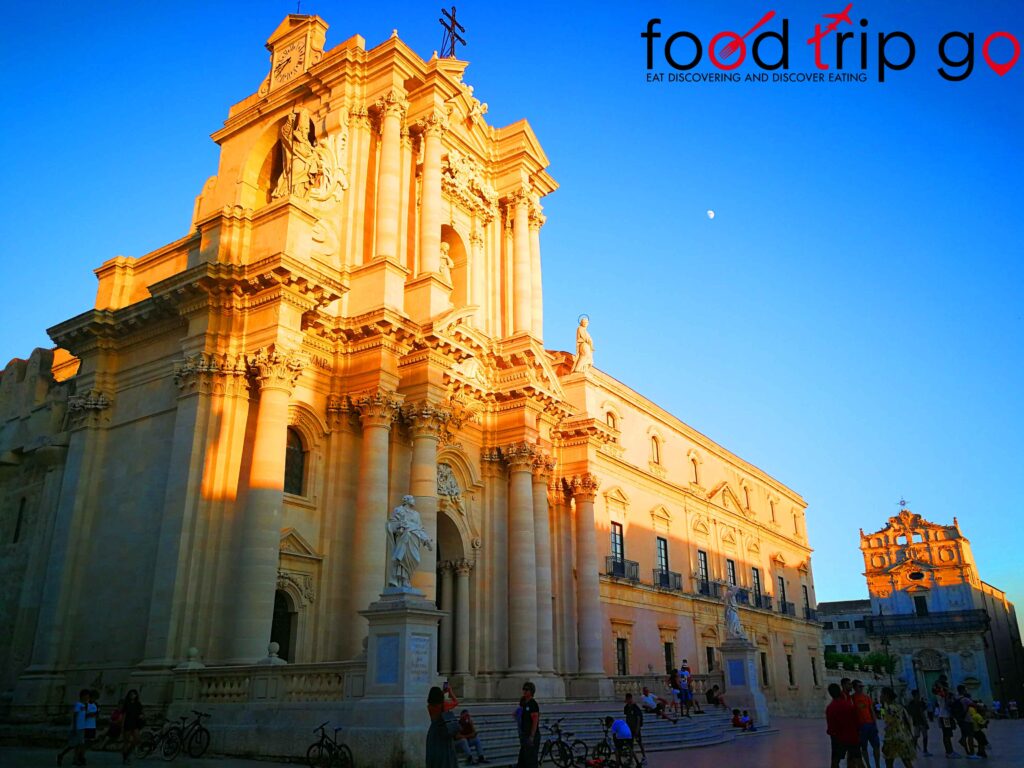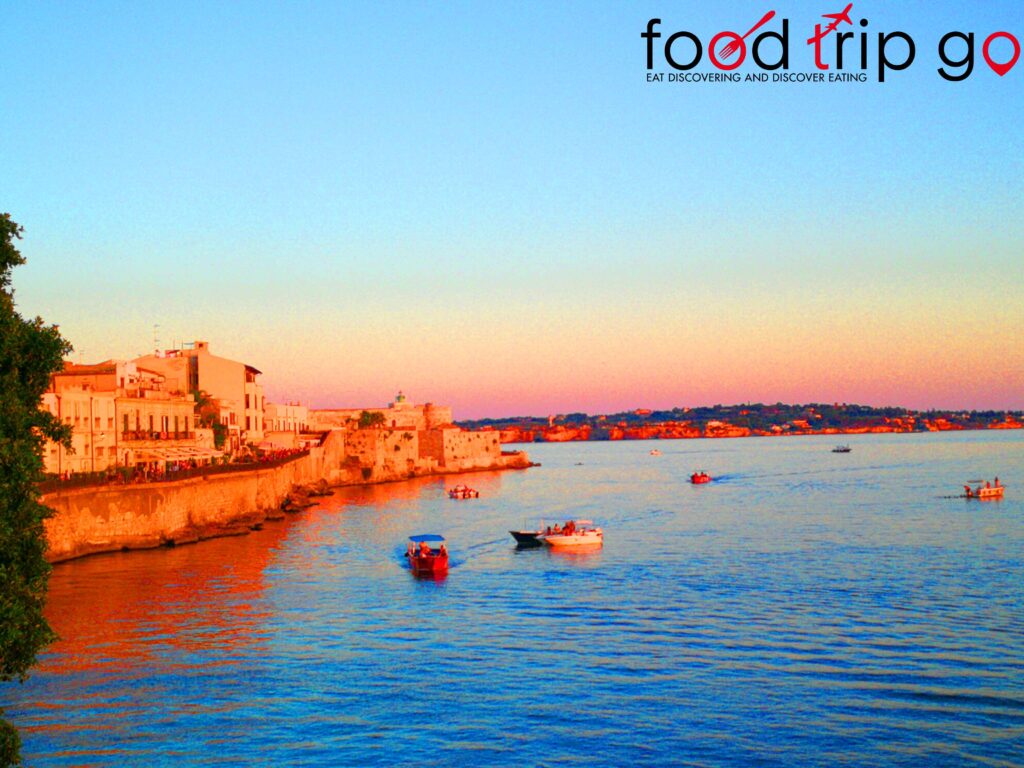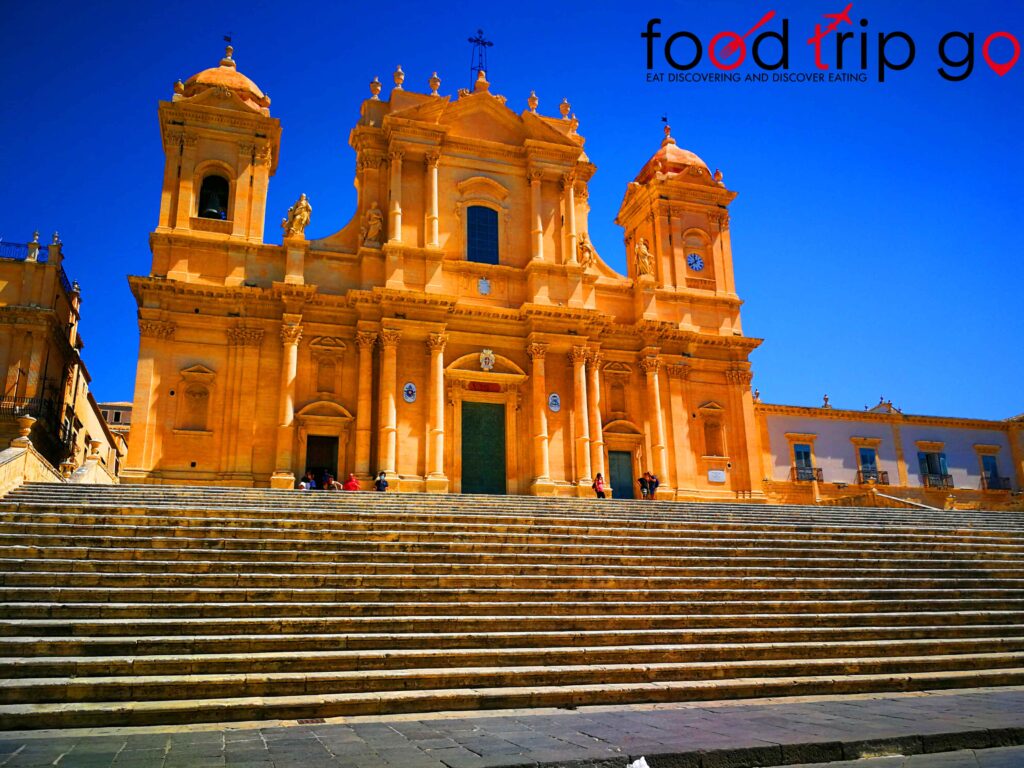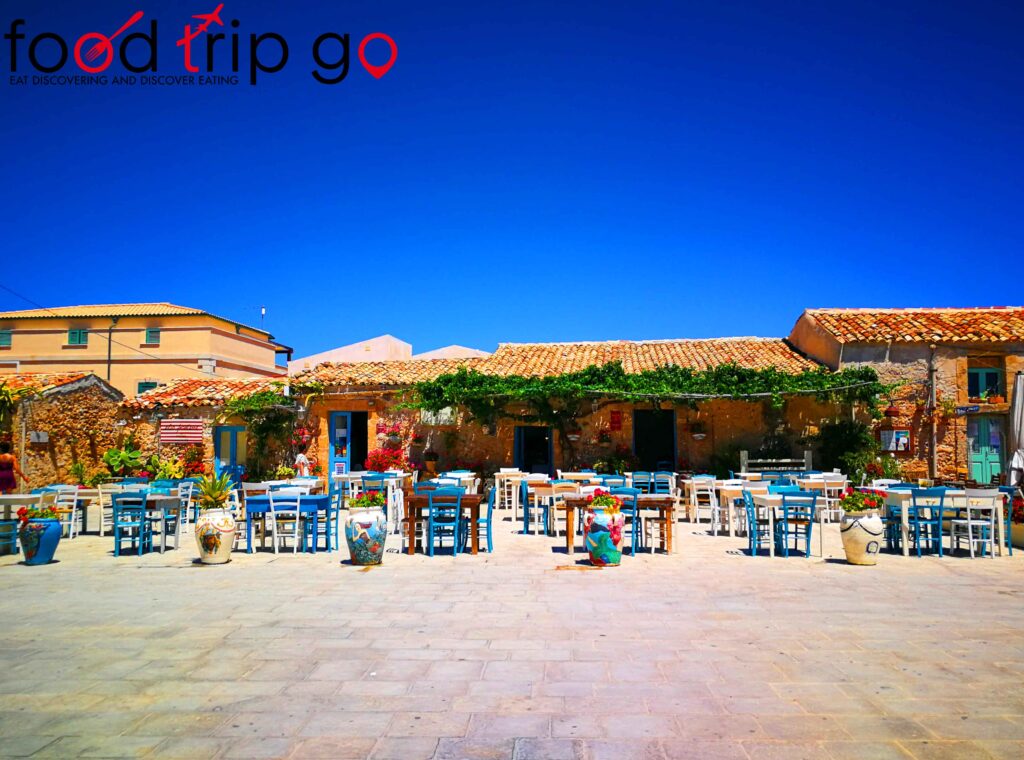Immerse yourself in the historical, artistic and culinary wonders of Syracuse and its surroundings with a tailor-made food and wine tour
Sicily is a land of history, breathtaking nature and unmistakable flavours, and Syracuse is one of the most brilliant examples. This ancient Greek city, a UNESCO World Heritage Site, is famous for its classical ruins, Baroque architecture and authentic Mediterranean cuisine.
Near Syracuse, towns such as Noto, Marzamemi and Avola enrich the experience with art, culture and food and wine traditions. This tour will allow you to experience a perfect holiday between history and local food.
Typical Syracuse dishes and wines
Syracuse is renowned for its traditional cuisine, which exalts the authentic flavours of the Mediterranean, and for its unique wines.
Scacce, Cucche and Pastizzetti
Scacce are stuffed flatbreads typical of Syracuse street food, filled with aubergine, tomato, sausage or other ingredients. Crispy and tasty, they are one of the most popular dishes during a stroll through the streets of the city.
Cucche are traditional Syracuse rustics, also known as ‘cucche da ancucchiare’, stuffed with cheese and sausage. Small in size, they are so tasty that they become irresistible: one pulls the other!
Pastizzetti, typical of the Easter festivities, are small bundles of dough filled with lamb meat and rice. Originally served hot, they are also perfect cold, ideal for a picnic or an outing.
Syracuse-style Fried Pasta and Lolli with Broad Beans
Fried pasta is one of Syracuse’s oldest dishes, still popular in traditional restaurants. The thin spaghetti are whipped with anchovies, olive oil and a sprinkling of toasted breadcrumbs, which gives it an irresistible crunchiness.
Lolli con fave are a classic of south-eastern Sicily, a poor but nutritious dish that celebrates the broad bean. The handmade, elongated pasta pairs perfectly with broad beans, creating a simple but tasty meal.
Matalotta
Matalotta is a fish soup cooked in white wine, a dish with an intense flavour and rich tradition. Fish such as mullet and pheasant fish, accompanied by capers, provide an explosion of Mediterranean flavours.
Stimpirata and Gghiotta
Stimpirata is a sweet-and-sour condiment made with carrots, potatoes, olives, mint and vinegar, often used to accompany rabbit. This Sicilian dish, typical of Syracuse cuisine, enhances the contrast between sweet and sour flavours.
Gghiotta is a rustic dish combining different vegetables such as aubergines, peppers and potatoes, often used to accompany fish. Similar to caponata, it is a versatile recipe and perfect as a side dish.
Vavaluci
Vavaluci, or babbaluci, are snails stewed with tomato, onion and peppers, a prized and typical dish of Syracuse cuisine. They are also sometimes served in salads, with a simple dressing of garlic and oil, to taste the Mediterranean flavours at their best.
Typical Syracuse wines
The province of Syracuse is home to two exclusive DOCs: Siracusa DOC and Noto DOC. The Siracusa DOC includes red, white, Nero d’Avola and Syrah varietal wines, and the traditional Moscato di Siracusa. The Noto DOC, on the other hand, is famous for its Moscato Bianco wines, produced mainly in the municipalities of Noto, Rosolini, Pachino and Avola.
The DOC Siracusa area boasts a thousand-year-old winemaking tradition, dating back to the time of Greek colonisation, with Moscato di Siracusa identified as one of the oldest wines in Italy. Over the centuries, this area has produced renowned wines such as Moscato and Albanello, as well as Nero d’Avola, which are appreciated internationally.
What to see in Syracuse
Church of St. John in the Catacombs
This church hides underneath one of the largest complexes of early Christian catacombs in the world. A journey into the bowels of the earth, where history is intertwined with mystery.
Neapolis Archaeological Park
The Neapolis Archaeological Park in Syracuse is a testimony to the greatness of Magna Graecia, with the Greek Theatre as the main attraction. Neapolis, part of ancient Syracuse, preserves Greek and Roman monuments and is a UNESCO heritage site.
The Roman Amphitheatre, a gladiator arena, suffered damage during Spanish rule but remains open to visitors. The Greek Theatre, one of the largest in the world, dates back to the 5th century BC and is still used for annual performances and festivals. Sitting in the grandstands, one can enjoy a spectacular view of Syracuse and the Mediterranean Sea.
The Ear of Dionysus is an impressive man-made cave famous for its extraordinary acoustics. Linked to historical legends, it is a place where nature and the hand of man come together in a unique way.
Piazza Archimede and Diana Fountain
Located in the heart of Ortigia, this square is dedicated to the famous Greek mathematician Archimedes. In the centre stands the Fountain of Diana, celebrating Sicilian mythology. This majestic fountain depicts the goddess of the hunt, surrounded by mythological scenes related to the city of Syracuse. A corner of classical history immersed in city life.
Syracuse Cathedral and Cathedral Square
The Cathedral, built on the remains of a Greek temple, is a symbol of the harmonious fusion of different architectural styles, from ancient to Baroque. A masterpiece that enchants with its majesty.
The Piazza del Duomo is a place for meeting and contemplation, surrounded by elegant Baroque palaces and dominated by the imposing presence of the Duomo. One of the most beautiful squares in Italy.

Fountain Arethusa
The Fountain of Arethusa is a natural oasis in the heart of Ortigia, a freshwater spring that flows directly into the sea. The legend of the nymph Arethusa makes this place even more evocative. Mythology narrates that the nymph Arethusa turned into a spring to escape the advances of the god Alphaeus, a myth celebrated in the sculpture next to the Arethusa Spring. Papyrus plants grow in the fountain’s basin and fish and ducks swim there.

Maniace Castle
Built by Emperor Frederick II, Maniace Castle dominates the tip of the island of Ortigia. An imposing medieval fortification with spectacular views of the sea.
What to see in Noto
Palazzo Castelluccio , Palazzo Nicolaci di Villa dorata and Palazzo Ducezio
Palazzo Castelluccio is an example of noble architecture, with its richly decorated interior and elegant gardens. A testimony to the Baroque splendour of Noto.
Palazzo Nicolaci di Villa dorata, with its decorated balconies and sumptuous architecture, is one of the most emblematic buildings in Noto. A perfect example of Baroque luxury and grandeur.
Palazzo Ducezio is an example of architectural refinement. Its interior rooms are rich in decoration and history.
Hercules Fountain
Symbol of strength and courage, this fountain depicts Hercules holding a club. A monument celebrating the mythology and history of the city.
Church of San Domenico, Cathedral of Noto and Church of Santa Chiara and Monastery of San Salvatore
The Church of San Domenico is a jewel of sacred art, with a majestic façade and richly decorated interior. One of Sicily’s Baroque masterpieces. The Cathedral of Noto is an icon of Sicilian Baroque and dominates the city with its imposing façade and breathtaking interior. The Church of Santa Chiara, with its sober façade and elegant interior, is one of the most fascinating religious buildings in Noto. Next to it, the Monastery of San Salvatore offers a panoramic view of the city.

Villa Romana del Tellaro and Vendicari Reserve
Villa Romana del Tellaro is famous for its well-preserved mosaics depicting scenes of daily life and mythology. A plunge into Sicilian antiquity.
Riserva di Vendicari is an unspoilt natural oasis where golden beaches and wildlife offer a unique experience of immersion in nature. Perfect for birdwatchers and walkers.
What to see in the province of Syracuse
Marzamemi
This picturesque fishing village, with its stone houses and colourful harbour, is the ideal place for a relaxing stroll. It is also known for its tuna fishing tradition. Excellent fish restaurants can be found here, in a unique and colourful setting that seems to have stood still in time.
Pachino Famous for its sweet, juicy tomatoes, Pachino is an icon of Sicilian agriculture. Ideal for those who want to discover the authentic flavours of the area.

Isola delle Correnti beach
A paradise for sea lovers, where crystal-clear waters meet the currents of the Ionian and Mediterranean. Here you can glimpse the point where the seas touch.
Avola
City famous for its Nero d’Avola wine and almond sweets, Avola is a must for food and wine lovers. Its sea is also a great attraction.
Cavagrande del Cassibile
A spectacular nature reserve with deep canyons and natural pools of crystal-clear water. An ideal excursion for nature lovers and trekkers.
A Sensory Journey through History, Traditions and Flavours of Sicily
Syracuse and its surroundings offer a unique experience that combines art, history, nature and unforgettable flavours. Whether exploring the ancient ruins, enjoying the crystal-clear sea or savouring the local cuisine, every moment spent here is a sensory journey that enriches the soul.
With FoodTripGo, you can explore the best of Sicily in a tailor-made tour. Discover the flavours, history and natural wonders of Syracuse and its surroundings, for an experience you won’t forget. Get ready for an unforgettable experience amidst history, traditions and unparalleled flavours in one of the Mediterranean’s most fascinating destinations.